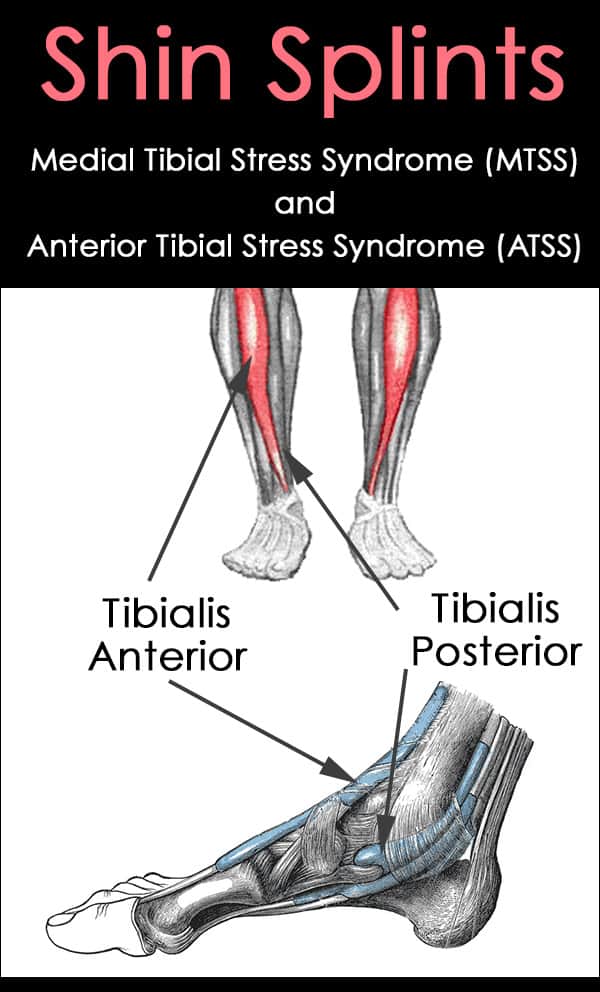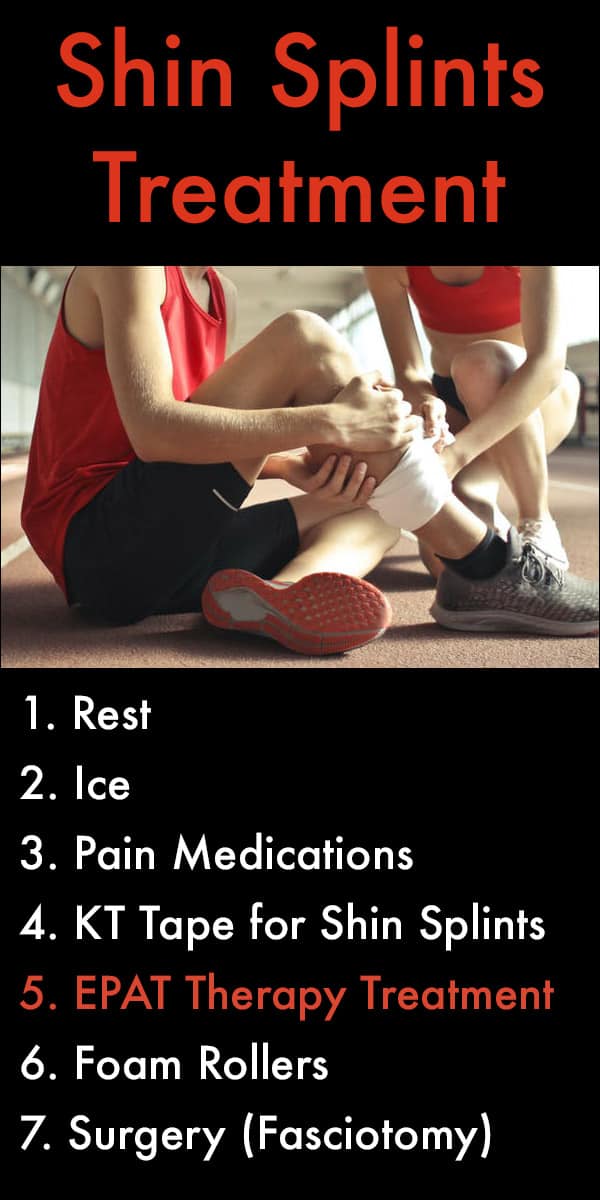Taking care of our bodies is incredibly important. That’s why it can be particularly frustrating when regular, healthy exercise, or even moderate to intense physical activity leads to injuries such as shin splints.
Medically referred to as Medial Tibial Stress Syndrome (MTSS) or Anterior Tibial Stress Syndrome (ATSS), bothersome shin splints symptoms can range from mildly annoying to very painful and debilitating.
Though this cumulative stress disorder can affect just about anyone, both professional and amateur athletes are susceptible, especially those who do a lot of running or jumping.
Understanding more about this condition and learning how to prevent shin splints is a great way to ensure less injury related downtime.
What Are Shin Splints?
Repeated stress and force placed on the shin bone during physical activity can cause the surrounding muscles and soft-tissue to become inflamed and tender.
This inflammation then places even more pressure on the shin bone and can cause the condition to worsen and become chronic, if the issue is not treated.
Shin splint related pain may be mild at first and even subside as a person’s body warms up during activity. Unfortunately, this a reason people might ignore the issue for a while, thereby allowing the condition to worsen.
In severe cases, excessive force placed on the shin bone can cause tiny fractures that lead to shin pain as well.
This condition can present itself as both anterior shin splints and posterior shin splints.
Anterior Shin Splints
Pain located on the front part of the shin bone is often referred to as anterior shin splints or Anterior Tibial Stress Syndrome (ATSS).
The anterior tibialis muscle helps stabilize the foot as it hits the ground. It is also the muscle that raises our toes during a running or walking stride.
A weak anterior tibialis or poor running technique can cause this injury. One good indicator of anterior shin splints is if there is pain when the toes are raised and the heel is on the ground.
Posterior Shin Splints
For posterior shin splints, pain usually occurs lower down the leg, on the inside of the shin bone where the posterior tibialis tendon is located, and this form is referred to as Medial Tibial Stress Syndrome (MTSS).
Running on hard surfaces, overtraining, or wearing old or improper shoes can cause this condition.
If the tendon becomes inflamed due to trauma or repeated excessive impact, it may cause small tears or even a complete rupture in severe cases.

Risks and Typical Shin Splints Symptoms
The more physical activity a person engages in, the more risk there is of developing the condition. Obviously, more intense activity and overtraining increases the risk as well.
However, it is even possible to develop shin splints from walking or from moderate activity levels performed on hard, slanted, or uneven surfaces.
Some types of sports and physical activities put more stress on this part of our body.
These can be quick stop-and-start sports, or those that involve jumping, such as tennis, basketball, football, soccer and even dancing. Long-distance runners, as well as track and field sprinters, are also prone to these injuries.
Other causes of pain from this condition can be related to old or improper shoes for a specific activity, physical issues like flat feet, a very high arch, poor training or performance techniques, and a lack of strength in major muscles groups like the thighs and gluteus.
Some common shin splint symptoms can include:
- Pain or tenderness on either side of the shin
- Soreness along the shin that subsides with exercise or activity
- Pain along the shin that increases with exercise or activity
- Throbbing or a dull ache on either the front or lower part of the leg, even without any activity
- Swelling or inflammation, and possibly tender to the touch
- Weakness or numbness in the foot
Ignoring shin splint pain, even if it’s not yet severe, is not necessarily a good idea. Without shin splints treatment, the condition can get much worse and painful.
What Are Common Shin Splints Treatment Methods?
Generally, a sports physician can diagnose shin splints from a physical exam and identifying symptoms.
They may also request an MRI or x-rays to rule out a fracture or other soft-tissue injuries, especially if the pain doesn’t subside with rest and less activity.
Routine Shin Splints Treatment Methods Include:
1. Rest
Rest is important, so stop or limit any activity that is causing pain to give the bone and muscles time to heal. Shin splints can take anywhere from three to six months to fully heal, but it may only take 2 to 4 weeks for pain to subside if caught early.
This is not the type of injury to “work through the pain,” and rest can be extremely beneficial to shortening the downtime necessary for proper healing.
2. Ice
Ice can help to reduce the soft-tissue inflammation and it might also ease some of the pain.
3. Pain Medications
Over the counter pain medications such ibuprofen (Motrin or Advil), will help decrease some of the inflammation and also lessen the pain.
4. KT Tape for Shin Splints
KT Tape for shin splints may be useful in reducing pain and swelling by improving blood flow to the affected area. It is made with cotton fibers and an elastic core, so it won’t restrict any range of motion. Here are instructions for taping shins to avoid further injury.
5. EPAT Therapy
EPAT Therapy is a method for speeding up the healing process by delivering impulse pressure waves deep into the soft-tissue. This is a noninvasive treatment that increases blood flow and reduces inflammation.
Also known as Extracorporeal Shock Wave Therapy (ESWT), EPAT Therapy is successful for treating many types of conditions without the use of surgery or other invasive procedures. It has shown to be effective for treating medial tibial stress syndrome, more commonly referred to as shin splints.
This treatment method can even be used by athletes or essential workers that must continue to perform at high levels while their injury is still healing.

6. Foam Rollers
A tight fascia has been known to provoke shin pain. The use of Foam Rollers on the shin and calf muscles a few times a day for several minutes each time can be an effective way to loosen the fascia.
7. Surgery (Fasciotomy)
Surgery for shin splints is rare, though in severe, chronic cases, a fasciotomy involves tiny cuts in the soft-tissue around the calf muscles, which may reduce pain. This is also called a Fascial Release Technique.
How to Prevent Shin Splints
Here are some popular ways to prevent shin splints.
1. Stretch calves and hamstrings before running or doing sports or exercise. This can also help prevent hamstring tendonitis.
2. Run or exercise on soft surfaces instead of concrete or paved surfaces whenever possible.
3. Gradually increase activity intensity or running distances instead of rapid increases.
4. Don’t run in old shoes that may have lost their cushioning or original arch structure.
5. Wear foot orthotics that supply more cushion and support to the feet.
6. Do exercises that strengthen the foot and hip muscles.
7. Maintain a healthy body weight.
8. Use the treatment methods listed above at the first sign of shin pain to speed up healing time and reduce downtime or aggravating the injury even further.
Anyone who is a regular runner will probably encounter shin splints at some point in their lifetime.
By understanding the causes, symptoms, and treatment methods, it’s possible to reduce the severity of the condition and get back on track with a normal routine in a short amount of time.
Tibialis Anterior image courtesy of Bildberabetning / Chrizz.